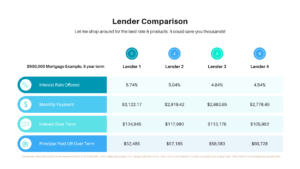Paying off a mortgage is one of the biggest financial goals most homeowners have. But in today’s BC market (Greater Vancouver–Fraser Valley)— with high prices in Vancouver, Burnaby, Richmond, Delta, Surrey, White Rock, Coquitlam, Maple Ridge, Pitt Meadows, Delta, Surrey, Langley, Abbotsford, Mission, and Chilliwack — it can feel like freedom is decades away.
The good news? With the right strategies, many Fraser Valley families are knocking years off their mortgages while saving thousands in interest.
Here are the top 5 strategies smart homeowners are using right now.
1. Refinancing to Lower Payments and Save Interest
Refinancing isn’t just for people in trouble — it’s a smart financial tool.
By refinancing, you can:
-
Lower your interest rate (if rates are lower than your current contract).
-
Extend your amortization to improve monthly cash flow.
-
Consolidate high-interest debt (like credit cards or car loans) into your mortgage.
This strategy often frees up hundreds of dollars per month. That money can be redirected into savings, investments, or lump-sum mortgage payments.
👉 In simple terms: a refinance can save money now AND help you pay off faster in the long run.
2. Using Prepayment Privileges
Most mortgages in Canada allow you to pay extra every year without penalty. This is called a prepayment privilege.
Common options:
-
10%–20% lump-sum payments annually.
-
Increasing your regular payment by up to 15%–20%.
Even small amounts make a big difference. For example:
An extra $200/month can shave 4–5 years off a typical mortgage and save tens of thousands in interest.
3. Cash Flow Restructuring
Cash flow is king. If all your money goes to servicing debt, you’ll feel stuck.
That’s where cash flow restructuring comes in:
-
Move short-term debt (like lines of credit or loans) into your mortgage at a lower rate.
-
Stretch the amortization to reduce monthly obligations.
-
Free up space in your budget to invest, save, or make extra mortgage payments.
This approach is especially powerful for self-employed homeowners or families juggling multiple expenses.
4. Cash Damming for Landlords
If you own a rental property or plan to, cash damming is a game-changer.
Here’s how it works:
-
You use rental income to pay down your personal (non-deductible) mortgage.
-
At the same time, you borrow for rental property expenses, making that interest tax-deductible.
Over time, you convert non-deductible “bad debt” into deductible “good debt.”
👉 For landlords in Fraser Valley, this strategy can reduce taxes, improve cash flow, and accelerate mortgage freedom.
5. Smart Use of a Readvanceable Mortgage
A readvanceable mortgage combines a traditional mortgage with a line of credit that grows as you pay down your principal.
Why it’s powerful:
-
Every dollar you pay off becomes available as credit.
-
You can use that credit to invest, renovate, or cover emergencies.
-
When combined with strategies like the Smith Manoeuvre, it can turn your mortgage into a wealth-building machine.
This isn’t for everyone — but with the right guidance, it’s one of the fastest ways to build equity while keeping options open.
🏆 The Bottom Line
You don’t have to feel stuck with a 25- or 30-year mortgage. Greater Vancouver–Fraser Valley homeowners are proving that with the right strategies — refinancing, prepayments, cash flow restructuring, cash damming, and readvanceable mortgages — you can reach freedom much sooner.
And you don’t have to figure it out alone.
As one of the best mortgage brokers in Fraser Valley, I specialize in advanced strategies that help homeowners save money, reduce debt, and build wealth — without increasing their expenses.
📞 Call me today at 604-725-4960 or visit rimazino.com to explore the best strategy for your situation.
